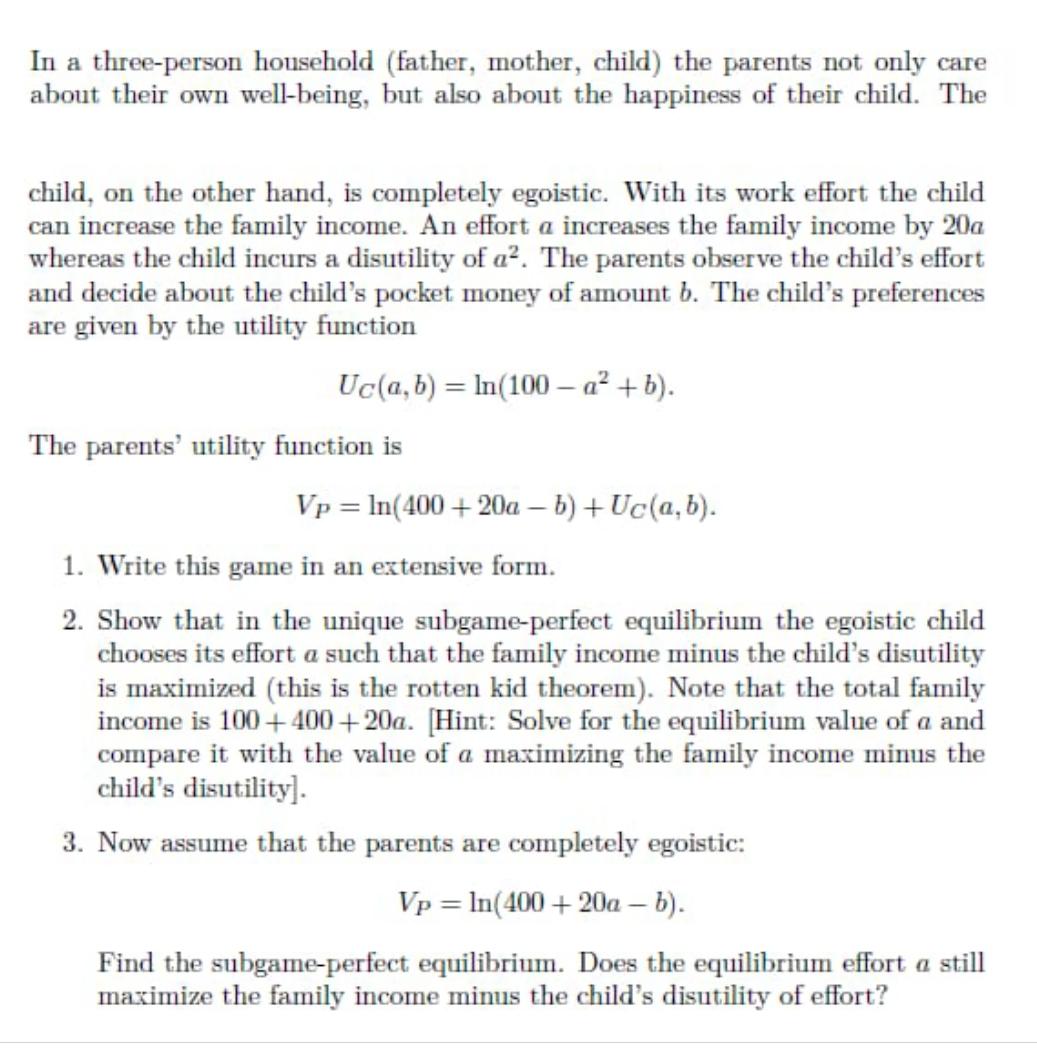Answered step by step
Verified Expert Solution
Question
1 Approved Answer
In a three-person household (father, mother, child) the parents not only care about their own well-being, but also about the happiness of their child.

In a three-person household (father, mother, child) the parents not only care about their own well-being, but also about the happiness of their child. The child, on the other hand, is completely egoistic. With its work effort the child can increase the family income. An effort a increases the family income by 20a whereas the child incurs a disutility of a. The parents observe the child's effort and decide about the child's pocket money of amount b. The child's preferences are given by the utility function = Uc(a, b) In(100-a + b). The parents' utility function is Vp In(400+20a-b)+Uc(a, b). 1. Write this game in an extensive form. 2. Show that in the unique subgame-perfect equilibrium the egoistic child chooses its effort a such that the family income minus the child's disutility is maximized (this is the rotten kid theorem). Note that the total family income is 100+400+20a. [Hint: Solve for the equilibrium value of a and compare it with the value of a maximizing the family income minus the child's disutility]. 3. Now assume that the parents are completely egoistic: Vp = ln(400+20a - b). Find the subgame-perfect equilibrium. Does the equilibrium effort a still maximize the family income minus the child's disutility of effort?
Step by Step Solution
There are 3 Steps involved in it
Step: 1

Get Instant Access to Expert-Tailored Solutions
See step-by-step solutions with expert insights and AI powered tools for academic success
Step: 2

Step: 3

Ace Your Homework with AI
Get the answers you need in no time with our AI-driven, step-by-step assistance
Get Started


